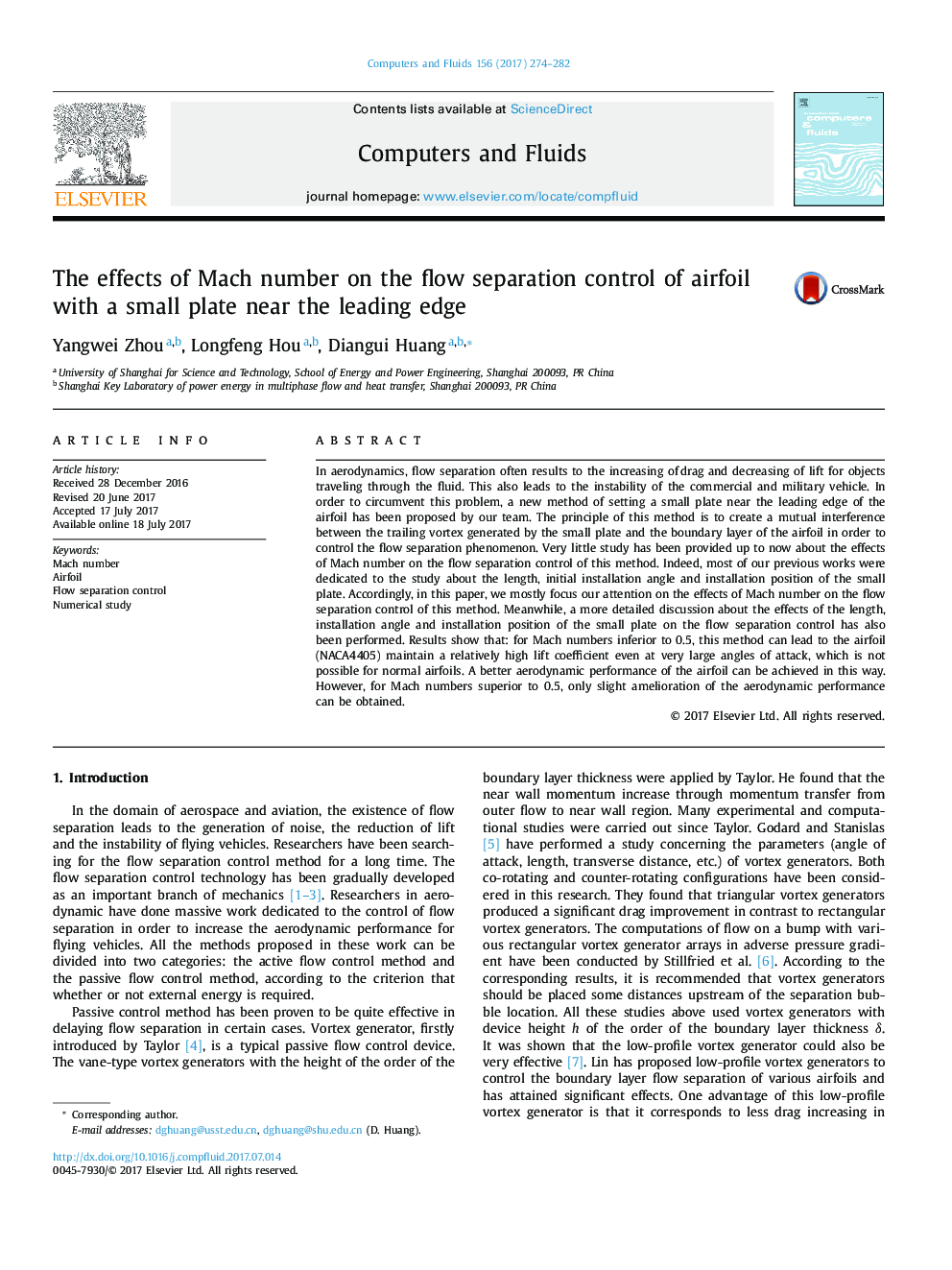| کد مقاله | کد نشریه | سال انتشار | مقاله انگلیسی | نسخه تمام متن |
|---|---|---|---|---|
| 5011757 | 1462655 | 2017 | 9 صفحه PDF | دانلود رایگان |
- Our research team proposed a new passive flow separation control method.
- The flow control effect of this method is better than most traditional methods.
- Mach number affects greatly the flow control effect of this method.
In aerodynamics, flow separation often results to the increasing ofâ¯drag and decreasing of lift for objects traveling through the fluid. This also leads to the instability of the commercial and military vehicle. In order to circumvent this problem, a new method of setting a small plate near the leading edge of the airfoil has been proposed by our team. The principle of this method is to create a mutual interference between the trailing vortex generated by the small plate and the boundary layer of the airfoil in order to control the flow separation phenomenon. Very little study has been provided up to now about the effects of Mach number on the flow separation control of this method. Indeed, most of our previous works were dedicated to the study about the length, initial installation angle and installation position of the small plate. Accordingly, in this paper, we mostly focus our attention on the effects of Mach number on the flow separation control of this method. Meanwhile, a more detailed discussion about the effects of the length, installation angle and installation position of the small plate on the flow separation control has also been performed. Results show that: for Mach numbers inferior to 0.5, this method can lead to the airfoil (NACA4405) maintain a relatively high lift coefficient even at very large angles of attack, which is not possible for normal airfoils. A better aerodynamic performance of the airfoil can be achieved in this way. However, for Mach numbers superior to 0.5, only slight amelioration of the aerodynamic performance can be obtained.
Journal: Computers & Fluids - Volume 156, 12 October 2017, Pages 274-282
